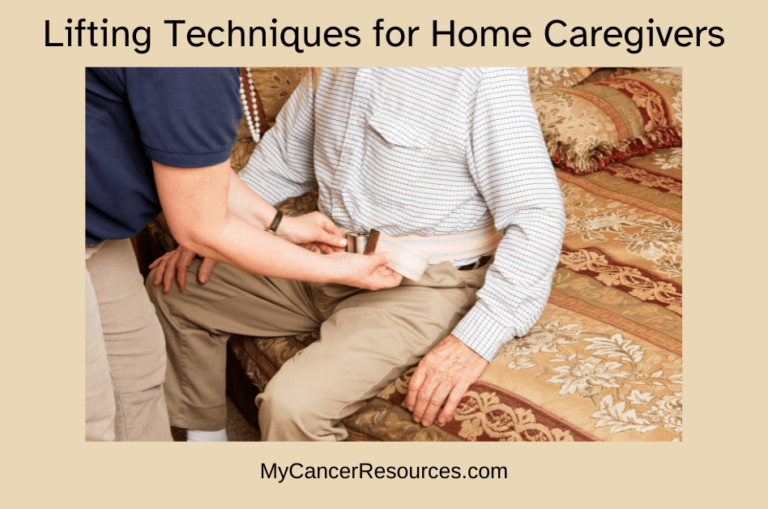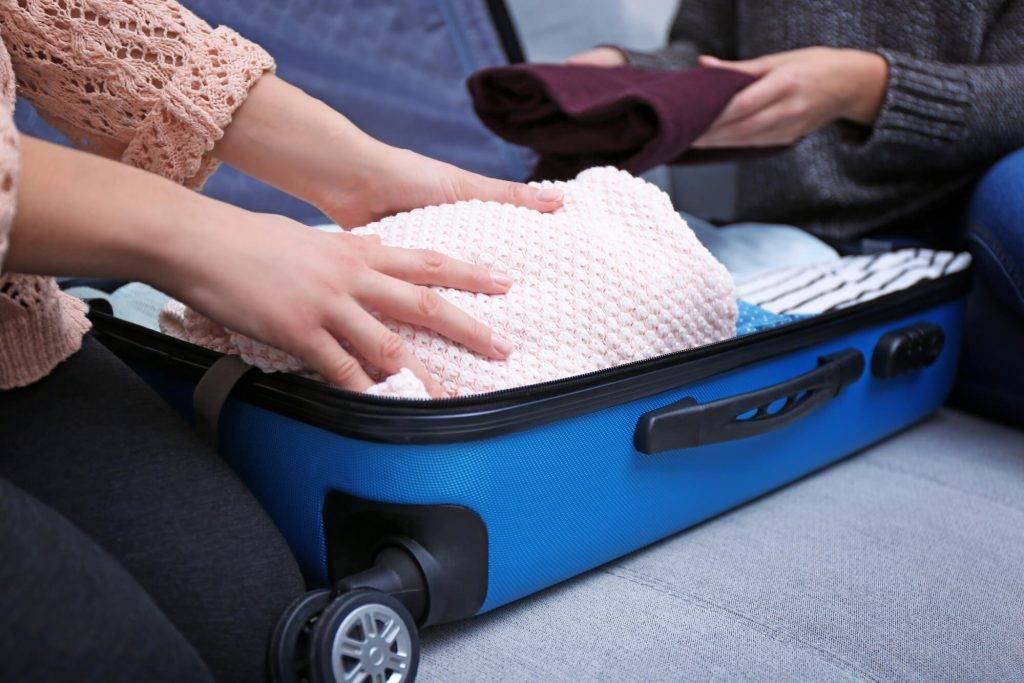
Understanding the Importance of Safe Lifting
Lifting a loved one in the home requires more than just strength; it demands knowledge and precision.
Improper lifting can lead to severe back injuries, muscle strains, and shoulder injuries for the caregiver, as well as discomfort and potential harm for the family member.
This is why it’s critical to master proper lifting techniques.
Safe lifting techniques minimize the risk of injury and ensures a secure and comfortable transfer for the person with limited mobility.
The Basics of Correct Lifting Techniques
Mastering correct lifting techniques begins with understanding of proper body mechanics. Let’s quickly review these.
- Plant your feet shoulder-width apart to maintain a strong stance. This positioning ensures stability and minimizes the risk of injury.
- Keep the natural curve of your spine.
- Lean back slightly, engaging your abdominal muscles. This protects your back by distributing the physical demands evenly.
- Avoid twisting at all costs, especially when lifting. Twisting puts extra stress on the back, increasing the likelihood of muscle strain or more severe back injuries.
Specialized Equipment for Safe Transfer
Special equipment exists that can make your job of lifting and moving easier. Follow the medical advice from the patient’s physical therapists and/or occupational therapist.
The most common piece of equipment used by family caregivers to help lift and move loved ones is a transfer belt, also called a gait belt. This is a belt that goes around the person’s waist and gives the caregiver something to hold onto to help lift the person.
Holding onto the gait belt while the person walks also gives both them and you more stability. Depending on how much support your loved one needs to walk, you can hold onto it tightly, or have it there simply to grasp onto in case they are wobbly.
You’ve likely already seen a gait belt used in the hospital by nursing staff. Here’s a short video showing how a belt is used for a patient lift.
Here are a couple of options for gait belts: one that is simple and another that has handles to help transfer someone comfortably from any angle or position.
|
$8.99
|
$17.94
|
Some even buy two of the handled belts, one for the patient and another for the caregiver. This gives the patient something to hold onto, and can help them feel more stable when walking.
Other equipment can include grab bars for getting into and out of the shower, and shower chairs for the person to sit on while bathing.
Lift chairs can also be a great help in getting the person almost up to a standing position, making it less work on you to lift them.
Choosing the right equipment will depend on your specific needs – how easily and independently the person can move, the layout of your home, and the type of transfer movements that are most often needed.
This equipment for home use is often covered by insurance or eligible for reimbursement through an HSA or FSA account.
Executing a Safe and Effective Patient Transfer
You may find your loved one needs assistance in moving from the bed to the toilet, the bed to a wheelchair, or simply standing up from a sitting position.
Talk to your loved one before attempting to move them. It helps if they know what to expect.
Explain what you’ll be doing and what you need them to do or not do.
This can decrease anxiety and make sure both people are ready for the lift and movement.
Here are some steps to make sure you’re using a good technique when lifting and moving your loved one.
This example will be moving someone in a seated position on the couch into the kitchen to eat.
- First, know where you’re going and make sure there isn’t anything on the floor blocking your path.
Clear a path that will help you get to where you need to go before starting to lift or move anyone.
Make sure the path has enough space for both you and them to walk. - Make sure both you and they are wearing grippy socks or shoes, especially if your home has slippery floors.
- Have them scoot to the edge of the couch, and put on a gait belt if needed.
- Make sure both your feet and theirs are firmly planted on the floor and that your back keeps its natural curve – don’t hunch over.
- Encourage them to lean forward and engage their abdominal muscles, which helps balance.
- Keep your feet shoulder-width apart and bend at the knees.
This helps you to use your stronger leg muscles, not your back muscles, which are usually weaker muscles than the legs. - Grasp onto the gait belt.
Your loved ones can gently wrap their arms around your neck, or use their arms to help push against the arms of the chair to raise up. - Slowly raise up, keeping your spine straight. Keep your core (ab muscles) tightened and use your leg muscles to lift smoothly.
Keep your loved one close to your body to minimize strain on both of you. - Once lifted, while still holding onto the gait belt, shift your position to move to the side of your loved one so you can see the path you’ll be taking to walk them into another room.
Make sure the person’s legs and feet are pointed in the direction that you’ll be moving. - Take slow, small steps. Turn with your feet rather than twisting your body.
- When the destination has been reached, follow these steps in reverse – use your legs to squat down and keep your back straight to lower them gently into the new position.
- Check to make sure they are comfortable and secure in the new location and adjust their position as needed.
These movements, done with proper form and attention to safety, greatly reduce the risk of injury for both of you.
The American Cancer Society has put together a short video on lifting techniques for home caregivers. It’s just a few minutes long, but about halfway through it shows a caregiver lifting a loved one from a seated position.
If you learn better by watching, then check out this video.
Preventing Common Injuries Among Home Caregivers
The most common injuries caregivers experience are back and shoulder strains.
These injuries often happen from improper lifting and the physical demands of transferring a patient.
Building your own abdominal, leg and glute muscles can help strengthen and prepare your body for the heavy physical work of lifting and moving a person with limited mobility.
Both strength training and proper stretching can go a long way in making lifting less taxing on your body.
It can be hard to find time as a caregiver, but stretching, doing squats or lifting light weights even for only a few minutes while your loved one is resting can help increase your strength.
Use equipment like gait belts to make your job a little easier and provide extra stability for your loved one.
Lifting your loved one in the home setting can challenge you to rely on brute strength. But this strategy can lead to injuring yourself, which risks the health of both you and your loved one.
It’s important to follow proper lifting techniques and use tools to make your job safer and easier.
Remember that you also need to care for yourself during this process and mastering the proper form can reduce your risk of injuries.
Following these general guidelines can help protect yourself from shoulder or back injury so that you can continue to help your loved one move around in your home.





